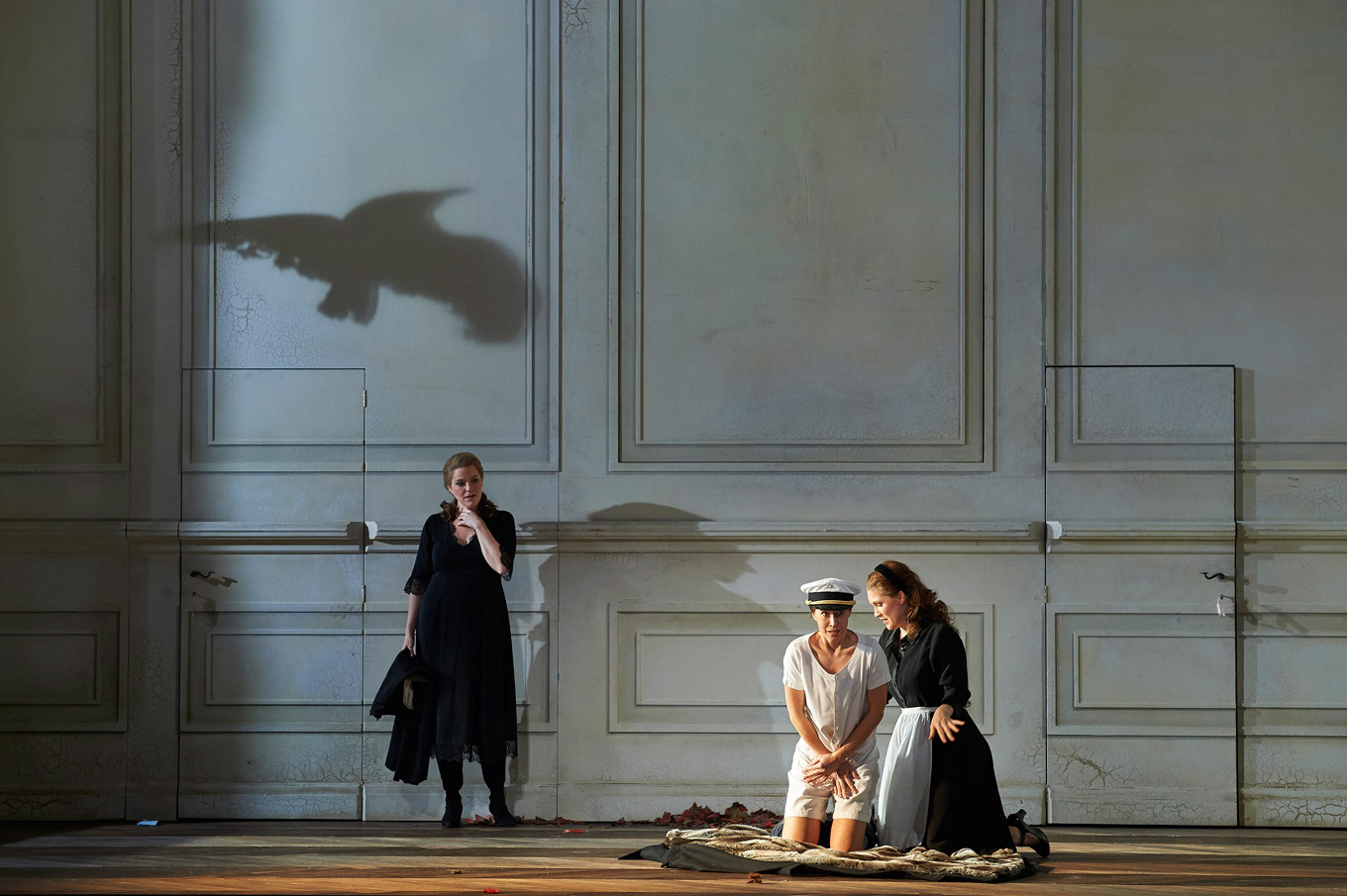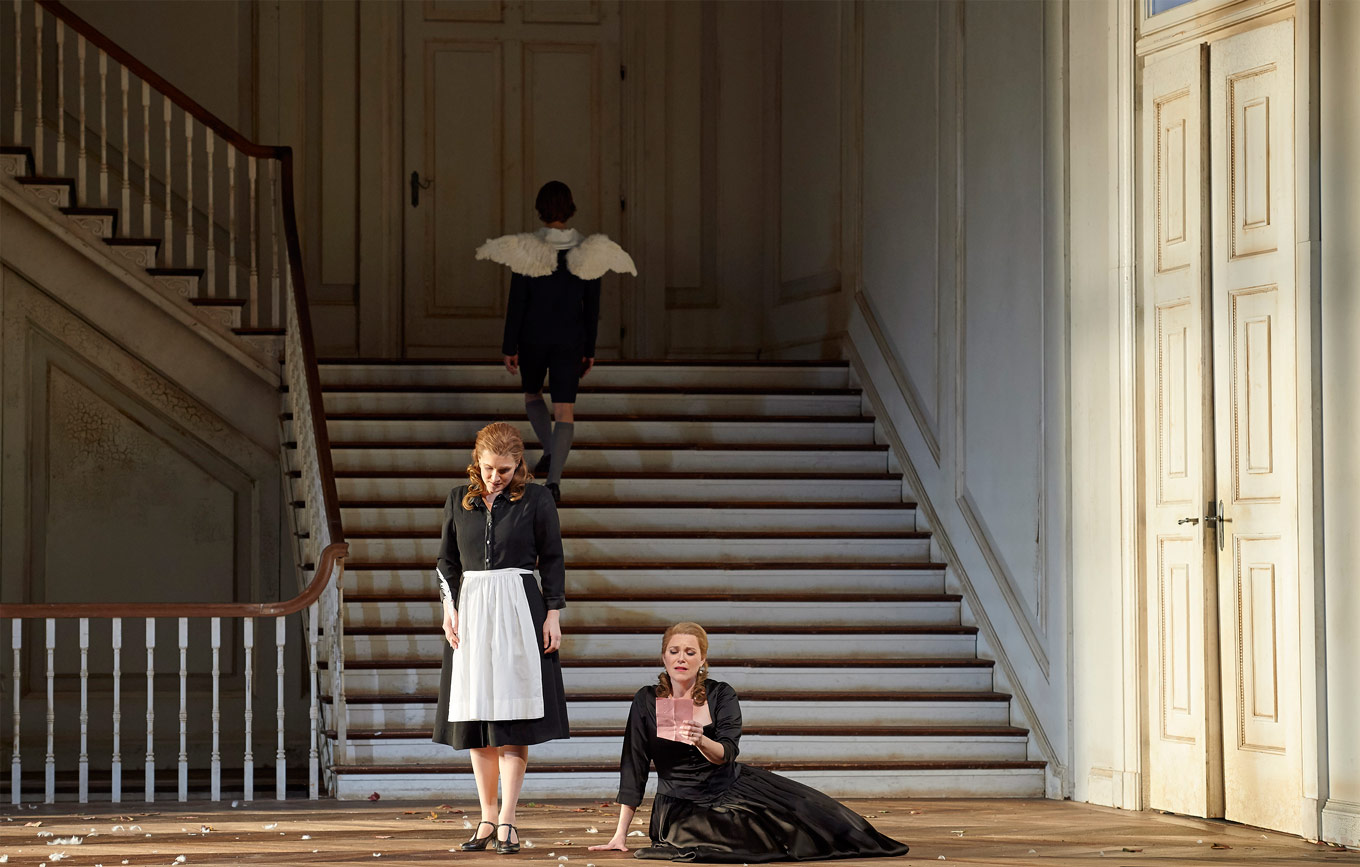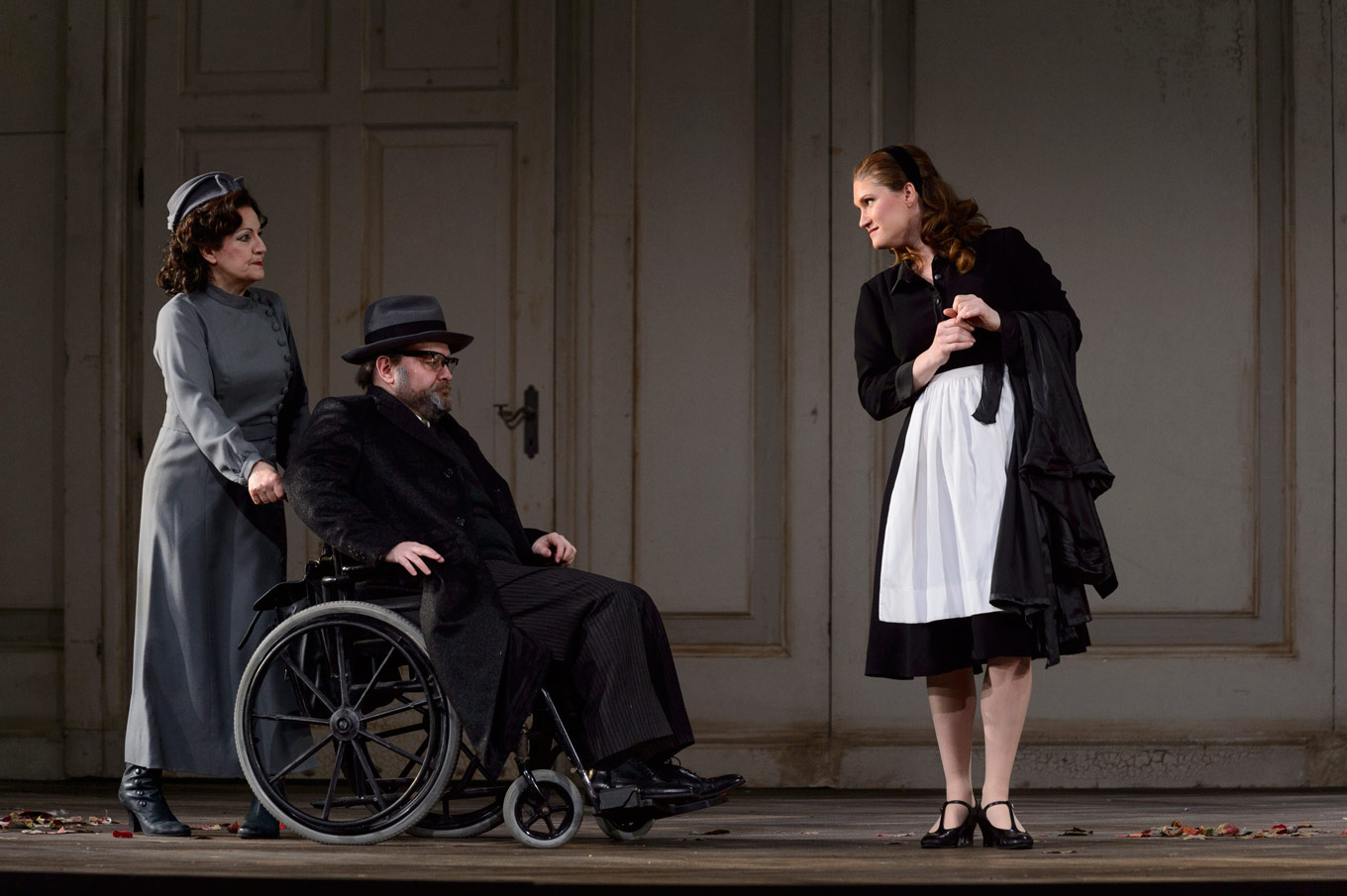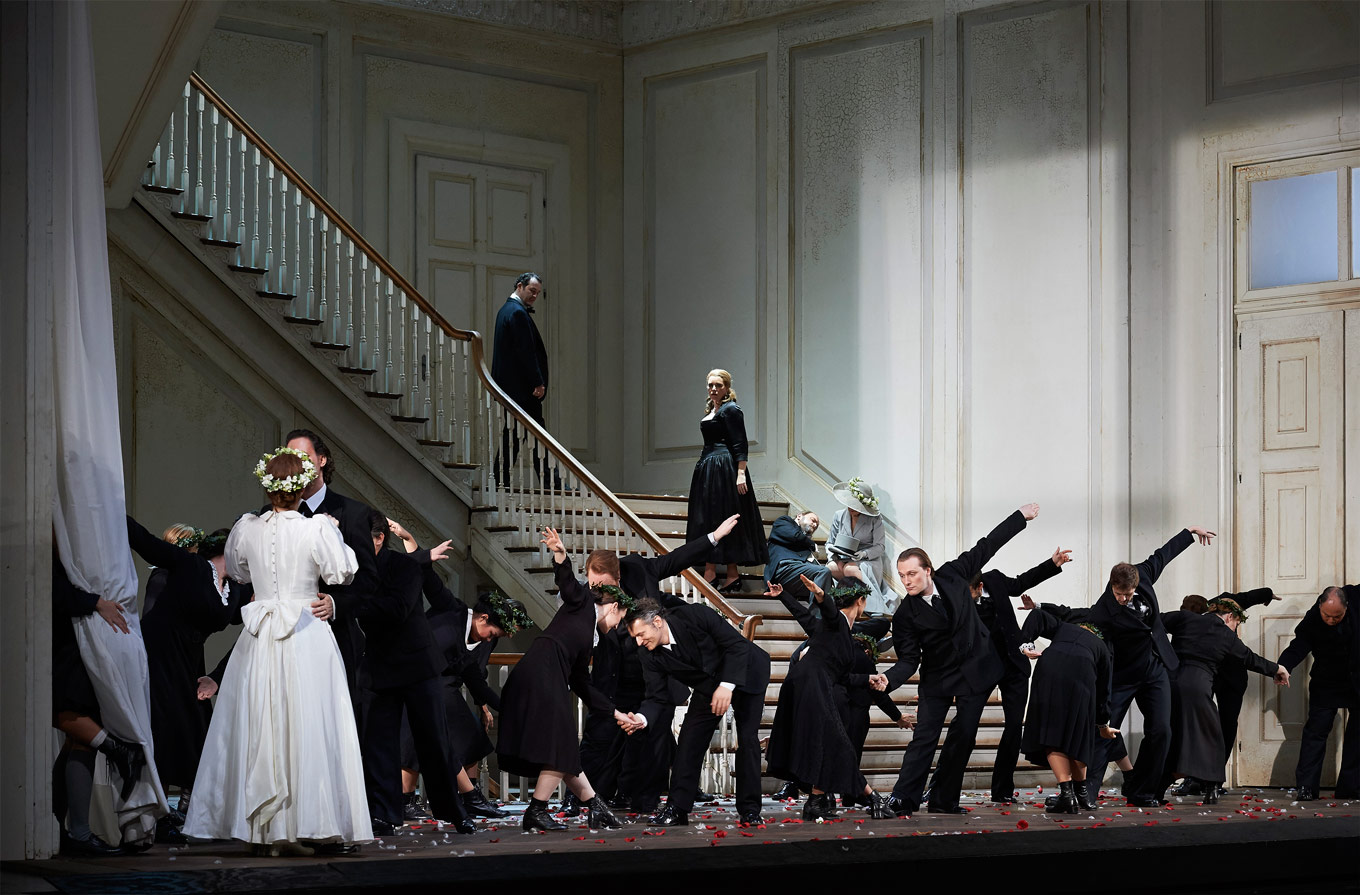
In review: The Marriage of Figaro
ReviewMozart’s The Marriage of Figaro is up and running at the Canadian Opera Company, pairing the curiosity over Claus Guth’s Ingmar Bergman-inspired production with the anticipation of a cast full of top-notch singers, which includes a big nod to Canadian talent. The comedy in Mozart’s masterpiece isn’t lost on Guth, but he makes a strong focal point out of psychoanalyzing the characters, exploring how they perceive their relationships with each other, and how they deal with any emotion related to lust.

The result is a dark look at Figaro, where we see Susanna getting groped and pawed by most of the men in her life, and the bitterness between the Count and Countess makes us noticeably uncomfortable. One could argue that in many ways it’s a “true” version of this story; still, Guth consistently shifts between the literal and the abstract. He creates the character Cherubim, a mute role played by Uli Kirsch, who embodies Love, a sort of benevolent (?) ringleader directing the action.
The production has a lot to say about social class, and about how we deal with lust. Every scene was permeated with symbols and gestures that illuminated the Count’s overpowering desire for Susanna, Marcellina’s being drawn to Figaro, or Cherubino’s obsession with the Countess (and perhaps her role as an enabler). There was clarity in each of these messages; Cherubim crawls all over Figaro and the Count in their respective arias, and we know that love can hinder and weigh us down. The set devolves from a sensible house to a dizzying series of staircases and hidden doors, and we know that the truth of the story is muddled, different for each character.

As astute and clear as the symbolic elements were, there was something heavy-handed about them in succession; the transition between naturalistic staging and stylized choreography was often inorganic, almost too deliberate. The opera felt divided into scenes, rather than having an easy flow in and out of musical numbers. Christian Schmidt’s set and costume design are gorgeous and classic, yet the flow of Mozart’s score got interrupted by large pauses between acts, to allow for a set change. The lulls brought a halt to the action of the show, and the sounds of heavy lifting and the odd drill from behind the curtain pulled us out of the story.
The singing in this production was stellar. Jane Archibald was a perfect Susanna, with a slight darkness in her voice that suited this production. This role doesn’t show off the vocal pyrotechnics that Archibald is known for, yet she was still compelling and completely human. In the title role, Josef Wagner had a clear point to his voice that seemed to be a textbook Figaro sound. The two of them together were high energy, yet not cutesy; they were a team, and they were the good guys, no doubt.
In one of his signature roles, Russell Braun was looming and brooding as the Count. He became a sad story of a man, made angry and isolated in his life; the darkness in his voice showed us all of this, and still he had energy for what was the most athletic staging of the Count’s Aria that I’ve ever seen. As his unhappy wife, Erin Wall made a stunning Countess. She set herself easily apart from Susanna, with her tall and grounded posture, and her first aria, “Porgi, amor”, seemed to be a beautiful wail for help. I was touched by her “Dove sono”, where she let down her noble stoicism, in place of a real Rosina, the teenaged girl who married young.
As Cherubino, mezzo-soprano Emily Fons was fantastic. She had spectacular boy-isms, and a bright sound that cut just like the speaking voice of a very young man. She showed us Cherubino as the little Casanova he is, in this production gaining more reciprocity than usual from his objects of desire. She was an adorable actor, making the sex-crazed young man a charmer rather than a nuisance. Equally charming was Sasha Djihanian as Barbarina; she had all the physicality of a young, excitable teenager, yet she sang with authority that made us respect her.
The supporting gang were all strong. Michael Colvin was perfectly untrustworthy as Don Basilio, even joining in with the Count to get a few gratuitious gropes of poor Susanna. Robert Pomakov was hilarious as the apathetic, perhaps ornery old Don Bartolo; he was a fantastic foil to Helene Schneidermann’s Marcellina. We felt like we had known the two of them for years, and they were oddly sweet as Figaro’s reunited parents.

Doug MacNaughton was the bumbling gardener, Antonio, who had subtle moments of comedy scattered over his limited stage time. I couldn’t help laughing at the sight of Antonio entering the Count’s home, and staring at the hardwood floors like he’s never been inside a building before. As the blind Don Curzio, Jean-Philippe Fortier-Lazure offered up some more background slapstick, as he wandered around helplessly, narrowly avoiding hidden staircases.
Under COC Music Director Johannes Debus, the COC Orchestra sounded light and airy. Some of the tempos seems to dig in their heels, and I often thought that too much dead air was left after an aria, halting the action in anticipation of applause. The singing deserves recognition, of course, but Figaro is a long one, and the quick pace of comedy is key.

Although I wasn’t sold on the whole arc in Guth’s production, this Marriage of Figaro is a must-see. The casting couldn’t have been more perfect, and like it or not, this production is an important indication of what’s happening on operatic stages outside of Canada. The show runs until February 27th, including the extra-special Ensemble Studio Performance on Feburary 22nd, where the cast is replaced by artists of the Ensemble Studio.
For full details and ticket information, follow our box office links below.


Comments